Top 5 Canadian Conspiracy Theories
When it comes to conspiracy theories, our southern neighbour is undeniably king. Did U.S. Naval Intelligence have advance knowledge of the attack on Pearl Harbor? Was John F. Kennedy really assassinated by a lone gunman? Was the moon landing a hoax? These questions hardly scratch the surface of the bottomless labyrinth of rabbit holes that are America’s manifold conspiracy theories.
Although they pale in scope and gravity to those of the United States, the Great White North has a few collusion delusions, sedition suspicions, and connivance contrivances of her own. From the chillingly plausible to the downright absurd, here are five conspiracy theories unique to the land of a maple leaf. Enjoy!
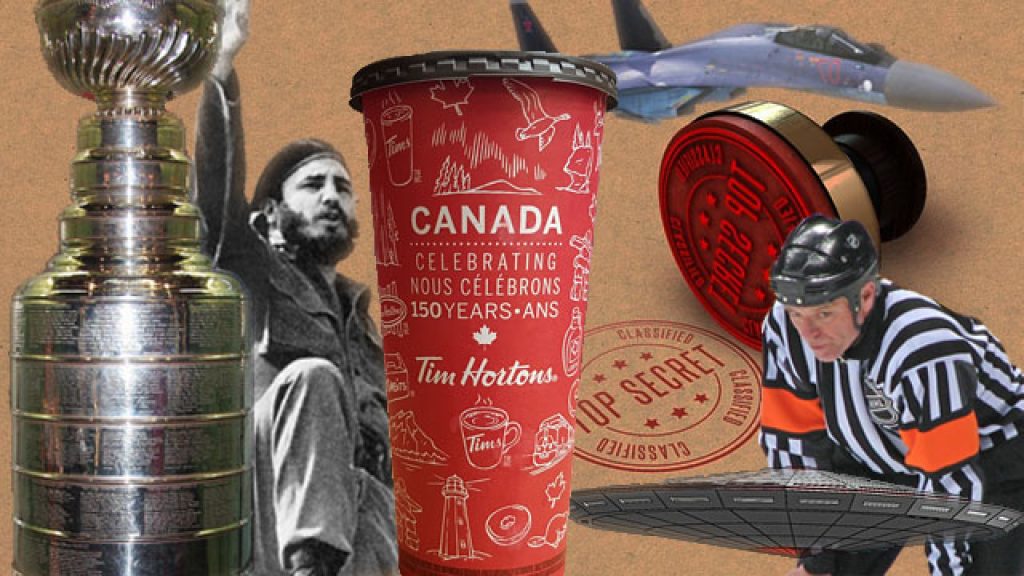
.
1. There’s Something in the Coffee
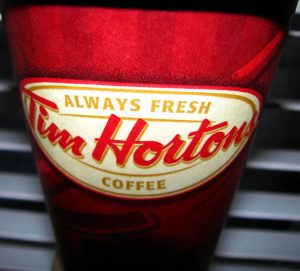 Whether you regularly snag a double-double on your way to work or limit your consumption to RRRoll-Up season, if you’re a Canadian java junky, chances are you’re intimately familiar with Tim Hortons’ coffee. For over half a century, Canada’s favourite restaurant has supplied untold road trippers with their caffeine fix, warmed countless frozen fingers at outdoor sporting events, and provided the caffeic catalyst for many a friendly get-together. No doot aboot it, Timmy’s coffee is good… some say too good.
Whether you regularly snag a double-double on your way to work or limit your consumption to RRRoll-Up season, if you’re a Canadian java junky, chances are you’re intimately familiar with Tim Hortons’ coffee. For over half a century, Canada’s favourite restaurant has supplied untold road trippers with their caffeine fix, warmed countless frozen fingers at outdoor sporting events, and provided the caffeic catalyst for many a friendly get-together. No doot aboot it, Timmy’s coffee is good… some say too good.
Conventional wisdom holds that the popularity of Tim Hortons’ iconic beverage is attributable to its rich full-bodied flavour, its reasonable price, and its oft-touted perpetual freshness. According to some, however, that widely-held yet seldom-spoken assumption just doesn’t stand up to scrutiny.
Although Tim Hortons undoubtedly makes a solid cup of joe, its brew is objectively far from the finest of its kind. Spend a week indulging exclusively in high-quality coffee from a local roastery and your next cup of Timmy’s will probably taste like mud. Yet that very same day, when 5 o’clock rolls around and you fancy an afternoon pick-me-up, it won’t be that artisanal coffee you crave…
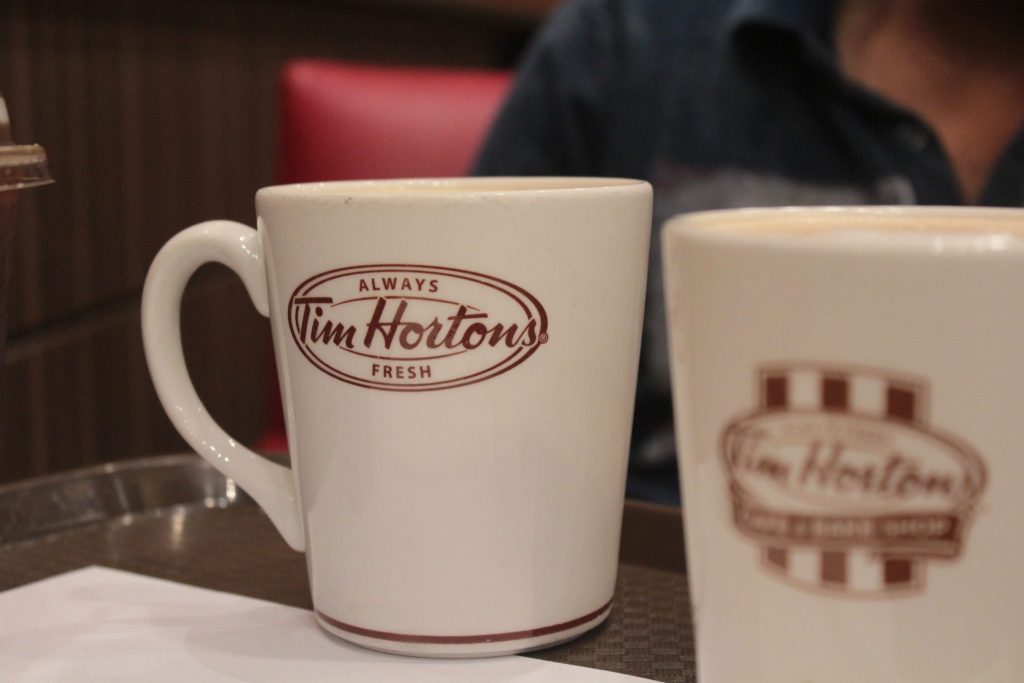
For some, the only explanation for the irresistible allure of Tim Hortons’ coffee is that it contains some sort of ultra-addictive narcotic. Some say that Tim’s takes a page out of Coca Cola’s old playbook and laces its beans with sprinklings of cocaine. Others whisper that the waxy coating that lines the interior of its paper cups contains trace amounts of nicotine- too little to produce any noticeable effects, but just enough to get you hooked. Whatever the case, many Canucks half-jokingly surmise that there might be more to Tim Hortons’ coffee than meets the eye.
2. The NHL is Biased Against Canadian Teams
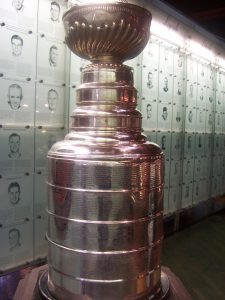
If there’s anything that Canadians love more than Tim Hortons’ coffee, it’s watching Hockey Night in Canada- a TV program featuring live National Hockey League (NHL) games. Despite Canada’s unbridled enthusiasm for its national sport, however, it’s been 26 years since a Canadian NHL team won the Stanley Cup, the coveted NHL championship trophy.
There are currently 31 teams in the NHL, and seven of them- namely the Calgary Flames, the Edmonton Oilers, the Montreal Canadiens, the Vancouver Canucks, the Ottawa Senators, the Toronto Maple Leafs, and recently resurrected Winnipeg Jets- are Canadian (the remaining 24 are American).
If the winners of the Stanley Cup were chosen at random, the odds that American NHL teams would win the championship 26 years in a row would be around 1 in 500. Of course, the NHL championship is not a game of chance, and there are many factors which determine a team’s likelihood of making and progressing through the playoffs. So what sets Canadian NHL teams apart from their American counterparts?
Are the coaches of Canadian teams less competent than those of American teams? No.
Are the players paid differently? No.
Do American teams have an unfair advantage in the draft? No.
According to some, the only difference between Canadian and American NHL teams is the sort of treatment they receive from the officials during playoffs.
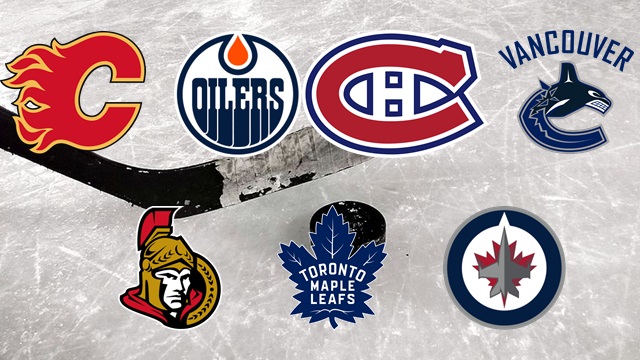
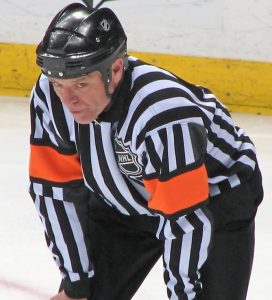
For years, Canadian hockey fans have observed that NHL referees seem to favour American teams, especially during playoff season. Not only do the refs appear to be disproportionately tough on Canadian players- they also seem to turn a blind eye to a staggering number of American infractions. For example, during the third period of this year’s first playoff game between the Boston Bruins and the Toronto Maple Leafs, Toronto’s Nazem Kadri was suspended for the remainder of the series for crosschecking Boston’s Jake DeBrusk- an incident from which DeBrusk was quick to recover. In game seven of that same series, at a critical moment in the second period when the series was on the line, Boston’s Zdeno Chara sucker punched Toronto’s captain John Tavares in the side of the head so hard that he fell to the ice… and got away scot free. Hockey fans may recall a similar double standard characterizing this year’s playoff series between the Calgary Flames and the Colorado Avalanche.
Why would hockey referees favour American teams over Canadian teams? Some paranoid Canadians suspect that they are pressured to do so by the National Hockey League, which has a financial motive to increase hockey’s popularity the United States. Securing the fanship of America’s larger and wealthier pool of sports lovers would certainly allow the NHL to make more money off network revenue. Perhaps, some say, the NHL is doing everything in its power to extend the seasons of American hockey teams for as long as possible in an effort to spread the game throughout the Land of Opportunity.
3. Justin Trudeau is Fidel Castro’s Son
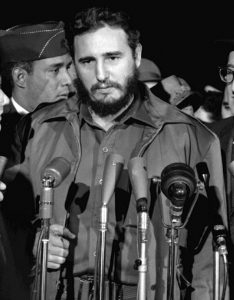
Whether your love him or hate him, Canada’s Prime Minister Justin Trudeau elicited a universal facepalm across the Western world when he issued his praise-filled eulogy following the death of Cuban dictator Fidel Castro in November 2016. Sure, Justin’s father, former Prime Minister Pierre Elliot Trudeau, was a personal friend of the one-time Communist revolutionary, and Justin himself had met with El Jefe three months prior to his finis. But haven’t the Holodomor, the Cambodian genocide, and the Great Chinese Famine taught leaders of the free world to think twice before showering their dissent-crushing, human-rights-abusing, nuclear-holocaust-flirting Communist counterparts with commendations?
The Prime Minister’s baffling public statement prompted many Canadians to take a closer look at Justin’s relationship with the late Cuban leader. Almost overnight, a wild theory took form. Perhaps, some said, Justin Trudeau is really not Pierre’s son at all, but rather the illegitimate love child of Fidel Castro and Pierre’s wife, Margaret.
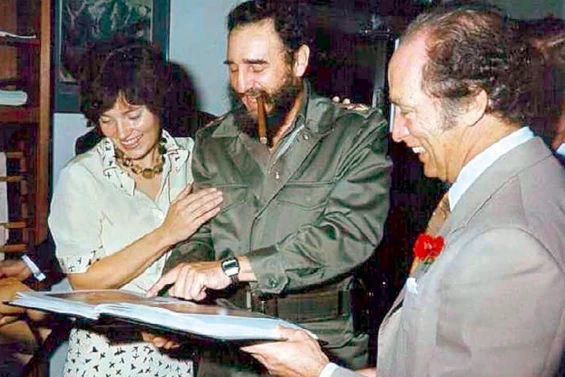
Immediately, photographs comparing Justin Trudeau with young Castro began to circulate throughout the internet. Take away Fidel’s scruffy beard and exchange his combat fatigues for a suit and tie and the resemblance is truly uncanny.
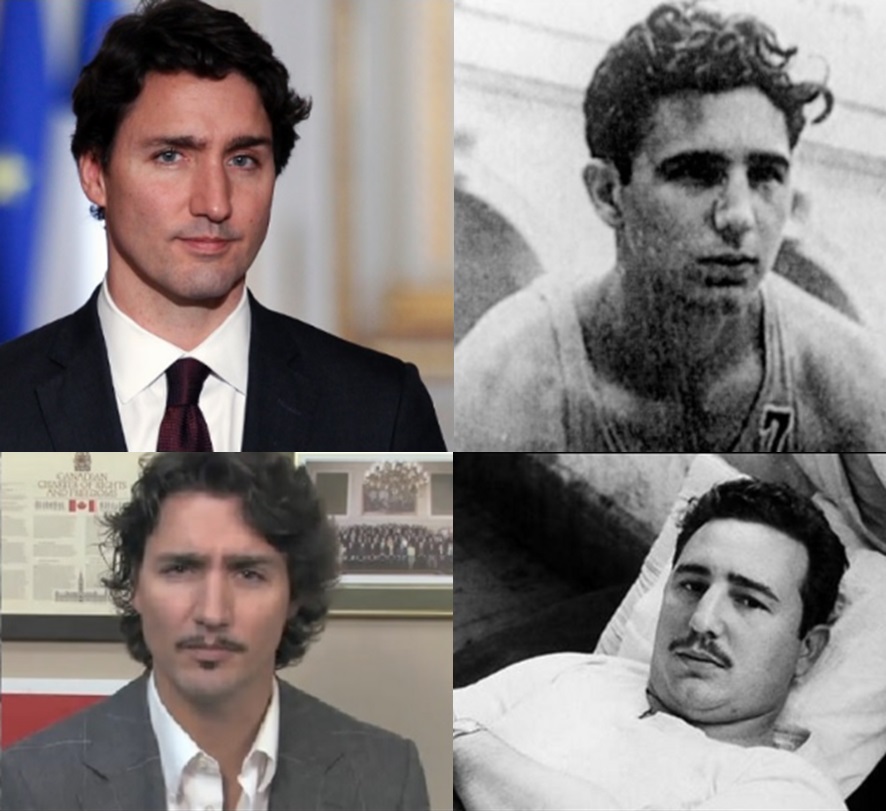
Proponents of the theory noted that both Pierre Trudeau and his wife Margaret, the latter nearly thirty years Pierre’s junior, were notoriously promiscuous, and that Fidel became fast friends with Pierre in the 1970s, eventually serving as a pallbearer at his funeral in 2000.
Various fact-checking websites, in response to the rumour, were quick to point out that Justin Trudeau was born on Christmas Day, 1971- five years prior to Pierre and Margaret’s famous three-day visit to Havana in January 1976- and that, barring a secret rendezvous, there was no plausible opportunity for the alleged affair to have taken place in the timeframe required for Justin to be el hijo del Comandante.
That resemblance, though…
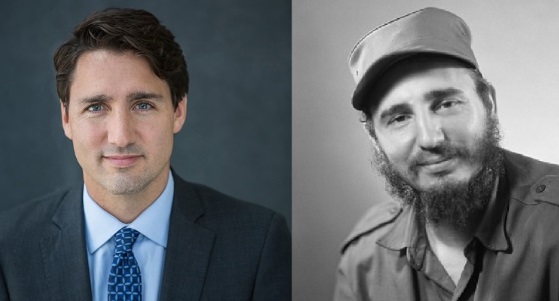
4. Russian Military Jets in Northern Canada
If you’ve spent much time on this website, chances are that you’re familiar with the Nahanni Valley– a mysterious region hugging the junction of the Northwest Territories, Yukon, and British Columbia where, in the early 1900s, prospectors searching for a legendary lost gold mine routinely lost their heads.
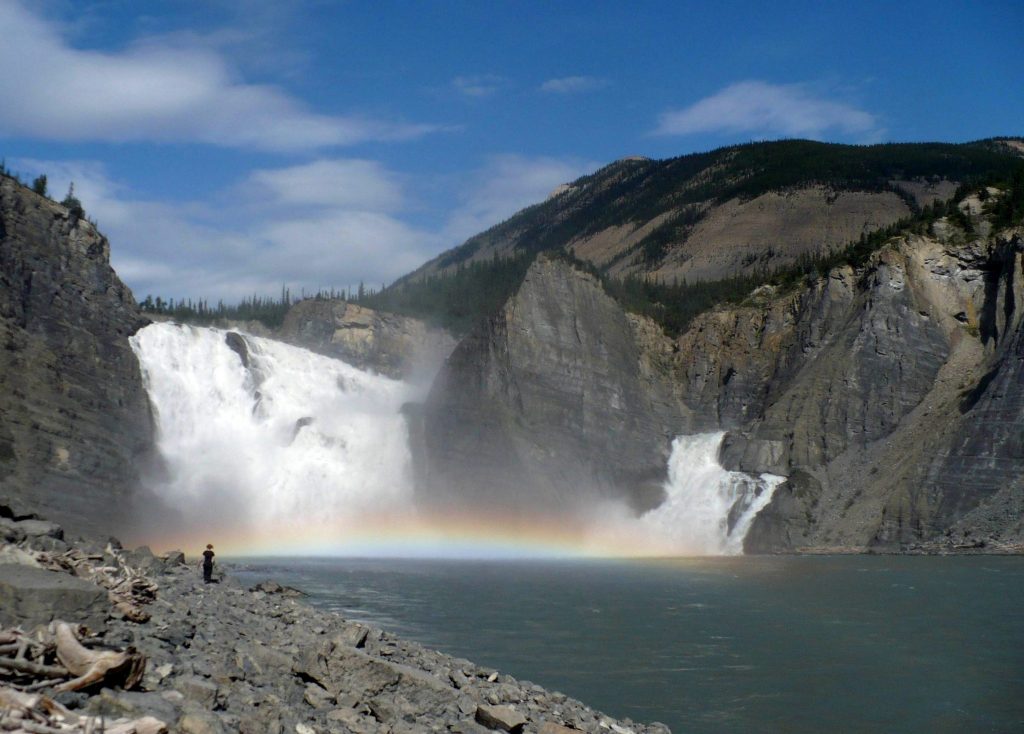
 Back in the summer of 2018, while interviewing an authority on the Nahanni Valley named Frank Graves, the author of this piece learned of yet another mystery endemic to this infamous vale in Northern Canada. During an expedition to the Nahanni Valley in the summer of 1965, Mr. Graves was informed by the local RCMP that Soviet fighter jets were often seen flying through the region. Frank elaborated on this phenomenon in a contemporary letter to his mentor, Ivan Sanderson, writing:
Back in the summer of 2018, while interviewing an authority on the Nahanni Valley named Frank Graves, the author of this piece learned of yet another mystery endemic to this infamous vale in Northern Canada. During an expedition to the Nahanni Valley in the summer of 1965, Mr. Graves was informed by the local RCMP that Soviet fighter jets were often seen flying through the region. Frank elaborated on this phenomenon in a contemporary letter to his mentor, Ivan Sanderson, writing:
“Some people- and notably a highly educated white man who has lived in the valley most of his life- remarked to me quite casually one day that enormous airplanes quite often came down from the north and sometimes fly so low in good weather that he could read their large markings even without his binoculars. Besides numbers, they bear ‘names’ or identifications in the Cyrillic alphabet. Some of these he had tried to copy down, and on showing them to another educated old-timer who had also seen these planes for some years, he learned that a priest from Ontario had had them translated, and that they were Russian, and standard markings for a certain series of overfly planes known to the Canadian authorities. I have asked around, but I never heard of such planes being spotted anywhere else; so why are the Russians so all-fired interested in this crazy valley? And crazy it is, and in all kinds of ways I later found out…”
Chillingly, recent news suggests that Russian violation of our northern airspace might not be some bygone exercise of the Cold War. Just four months ago, on January 26, 2019, U.S. Air Force and R.C.A.F. fighter jets were scrambled to escort two Russian bombers that had ventured too close to Canada’s Arctic coast.
5. The Shag Harbour UFO Cover-Up
Speaking of mysterious flying objects, no list of Canadian conspiracy theories would be complete without a nod to the UFO of Shag Harbour, Nova Scotia, and the alleged cover-up surrounding its subsequent investigation by the Canadian military.
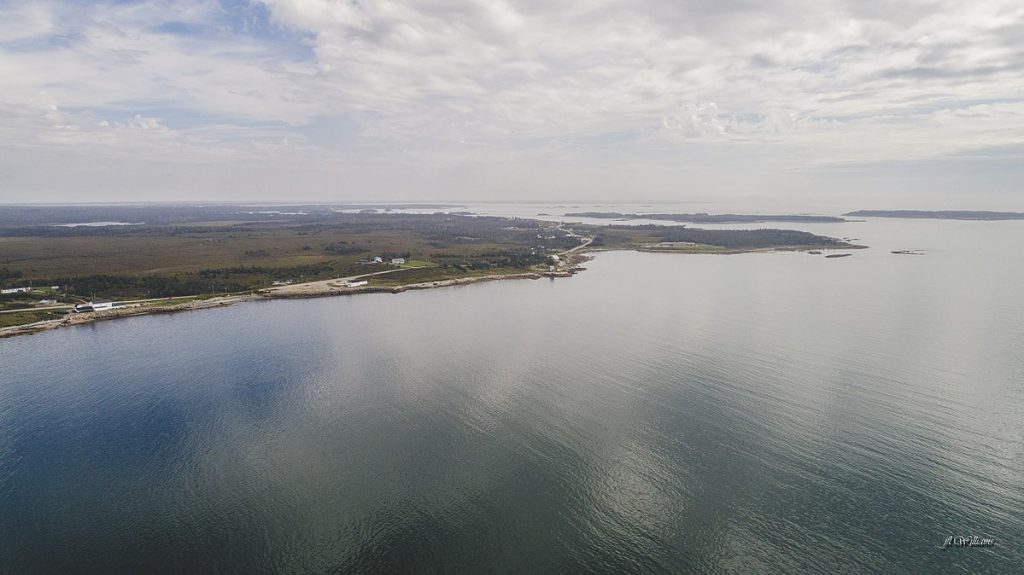
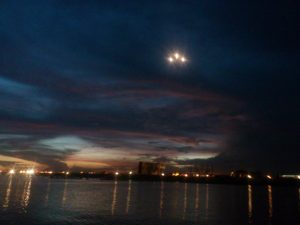 On the eve of October 4, 1967, in the tiny fishing village of Shag Harbour on the southwestern tip of Nova Scotia, dozens of witnesses saw an unusual pattern of yellow lights flashing in the night sky. After approaching from the east, the lights hovered over the harbour for some time before plunging down into the water, producing a bright flash of light and a loud boom suggestive of an explosion. Initially fearing that an airplane had crashed into the harbour, several witnesses scrambled to get a better view of the crash site so that they could accurately relay its position to the local authorities. Instead of finding the wreck of a downed aircraft, however, the witnesses met with a strange sight- a pale yellow dome of light floating atop the water’s surface. Several young fisherman informed the local Mounties of the incident, and in no time a rescue operation was underway. By the time the R.C.M.P. arrived on the scene, the dome was heading east along the surface of the water, leaving a trail of sparking yellow foam in its wake. The policemen watched as the mysterious object disappeared into the night.
On the eve of October 4, 1967, in the tiny fishing village of Shag Harbour on the southwestern tip of Nova Scotia, dozens of witnesses saw an unusual pattern of yellow lights flashing in the night sky. After approaching from the east, the lights hovered over the harbour for some time before plunging down into the water, producing a bright flash of light and a loud boom suggestive of an explosion. Initially fearing that an airplane had crashed into the harbour, several witnesses scrambled to get a better view of the crash site so that they could accurately relay its position to the local authorities. Instead of finding the wreck of a downed aircraft, however, the witnesses met with a strange sight- a pale yellow dome of light floating atop the water’s surface. Several young fisherman informed the local Mounties of the incident, and in no time a rescue operation was underway. By the time the R.C.M.P. arrived on the scene, the dome was heading east along the surface of the water, leaving a trail of sparking yellow foam in its wake. The policemen watched as the mysterious object disappeared into the night.
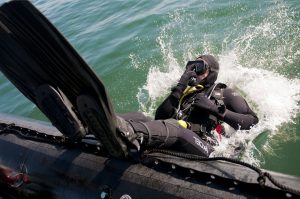 A subsequent Mountie investigation failed to turn up any bodies or debris at the crash site. Suspecting that the mysterious object might have been some sort of secret Soviet military device, the Royal Canadian Navy immediately flew in a team of divers to scour the site for anything out of the ordinary. Like the Mounties before them, the Navy divers were unable to recover anything of interest… at least, that’s the official story. Local rumour has it that the Navy divers did recover a component of the mysterious craft on the seafloor, which they wrapped underwater and brought to the surface in secret.
A subsequent Mountie investigation failed to turn up any bodies or debris at the crash site. Suspecting that the mysterious object might have been some sort of secret Soviet military device, the Royal Canadian Navy immediately flew in a team of divers to scour the site for anything out of the ordinary. Like the Mounties before them, the Navy divers were unable to recover anything of interest… at least, that’s the official story. Local rumour has it that the Navy divers did recover a component of the mysterious craft on the seafloor, which they wrapped underwater and brought to the surface in secret.
According to UFO researcher Chris Styles, who tracked down and interviewed a number of the divers in the 1990s, one of his informants claimed that the Navy investigation at Shag Harbour was nothing more than a charade conducted for the benefit of the locals and any foreign agents who took an interest in the case. The Canadian military, which diligently monitored the Atlantic Northwest for Russian submarines, knew early on that the mysterious object that crashed in Shag Harbour had actually moved northeast to the waters off Shelburne, Nova Scotia. The Canadian Navy conducted another diving operation near Shelburne, which it kept secret from the public. During this covert retrieval operation, Navy personnel discovered two large crafts underwater, one of which appeared to be lending assistance to the other.
 Before the Royal Canadian Navy could conduct a thorough investigation of the crafts, a Soviet submarine entered Canadian waters, apparently in an effort to locate the mysterious objects. While the Canadian cruisers on scene departed to intercept the submarine, the strange crafts slipped away, ascended to the surface, took flight, and disappeared into the sky.
Before the Royal Canadian Navy could conduct a thorough investigation of the crafts, a Soviet submarine entered Canadian waters, apparently in an effort to locate the mysterious objects. While the Canadian cruisers on scene departed to intercept the submarine, the strange crafts slipped away, ascended to the surface, took flight, and disappeared into the sky.
Could there be some truth to the diver’s incredible tale? Did the Royal Canadian Navy really cover up evidence of a UFO crash at Shag Harbour, Nova Scotia? Perhaps we’ll never know for sure.
Did We Miss Anything?
Thanks for reading! If you about any more Canadian conspiracy theories, please feel free to share them in the Comments section below.







todd wiseman
No secret that USSR military Jets have long had a ”star trek” like cloaking unit to make themselves stealthy, likely they come down from the north pole over greenland then back over alaska ((which we do NOT really consider a ”yankee state” )) to the motherland USSR., regarding Hortons Donuts, I don’t drink coFFee, but their donuts have zero taste, like cardboard, would much rather drink hot CoCoa !! back to russia, the korean air flight 007 (( Bond haha)) and the missing flight 370 asian air a few years ago were both using stealth cloaking units or SCU ‘s.
Todd
ohio st Univ
Alvin
Great stories, Hammerson. Uncanny resemblance, though 😀
Alvin
Hammerson Peters
Thanks, Alvin! Isn’t it? Hope you’re doing well.